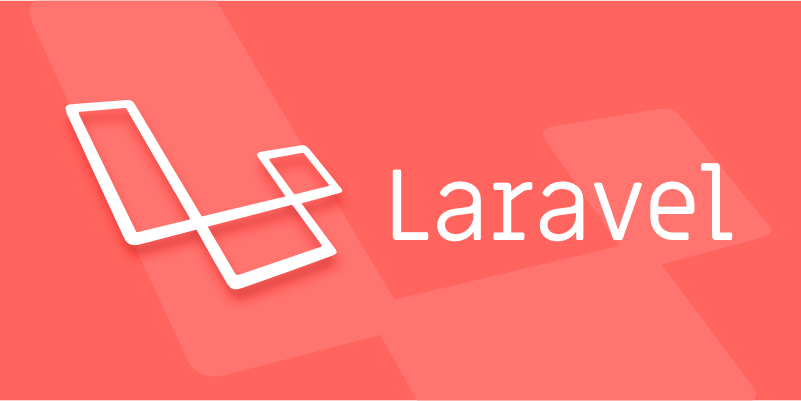Using cache in Laravel is to reduce database queries and improve application performance. Laravel provides a variety of cache drivers, such as file, database, redis, and memcached, which can be configured through the .env file and is specified by CACHE_DRIVER by default. 1. Configure cache driver: file is suitable for small projects, database supports persistence, redis/memcached is suitable for high concurrency environments. To use Redis, predis/predis must be installed and CACHE_DRIVER=redis is set. 2. Use Cache Facade: Common methods include put, get, remember, forget, and has. For example, use remember to cache the article list for 10 minutes. 3. Use cache tags: Supports grouping of caches by tags, such as cache user data and batch clearing. 4. Cache page or route: cache response content through middleware to reduce server pressure, such as cache pages with cache.headers for one hour. Rationally selecting driver and cache strategies can significantly improve performance.

Using cache in Laravel is mainly to reduce the overhead of duplicate database query, thereby improving application response speed and overall performance. Laravel provides a very flexible cache system and supports a variety of drivers, such as files, databases, Redis, Memcached, etc. Rational use of cache can significantly improve application efficiency, especially when processing data accessed at high frequency.

1. Configure the cache driver
Laravel supports multiple caching backends, and you can choose the right driver according to project needs. The default configuration is specified in the .env file via CACHE_DRIVER .
Common drivers include:

-
file: Save cached data in a file, suitable for small projects or local development. -
database: Use database table storage cache, suitable for scenarios that require persistence. -
redisormemcached: suitable for high concurrency and high performance production environments.
To use Redis, you need to install the extension package first:
composer requires predis/predis
Then set it in .env :

CACHE_DRIVER=redis
2. Use Cache Facade to operate the cache
Laravel provides Cache facade to operate cached data. Several commonly used methods include:
-
Cache::put('key', 'value', $minutes)). -
Cache::get('key', 'default'): Gets the cached value, and returns the default value if it does not exist. -
Cache::remember('key', $minutes, function()): Try to get data from the cache, execute the callback function and save the result if it does not exist. -
Cache::forget('key'): Delete the specified cache entry. -
Cache::has('key'): determines whether the cache exists.
For example, if you want to cache the article list for 10 minutes:
$posts = Cache::remember('posts', 10, function () {
return Post::all();
});In this way, when you access it again within 10 minutes, you will no longer check the database.
3. Use cache tags (for tagged cache)
If you are using a tag-enabled driver (such as Redis or Memcached), you can use cache tags to manage caches in groups. This is very useful when a certain type of cache needs to be cleared.
For example, cache multiple pieces of data from a user:
Cache::tags(['user_'.$userId])->put('posts', $posts, 15); Cache::tags(['user_'.$userId])->put('profile', $profile, 15);
After that, you can clear all caches of this user through the tag:
Cache::tags(['user_'.$userId])->flush();
This way, there is no need to delete keys one by one, which is very convenient.
4. Cache page or route
In addition to caching data, Laravel also supports cache entire page response content, which is especially useful for static content or pages with high access. You can implement it through middleware:
Route::get('/top-posts', function () {
return view('top-posts');
})->middleware('cache.headers:public;max_age=3600');This way the response content of this page will be cached for an hour. The browser or CDN decides whether to use the cache based on the HTTP header information, thereby reducing server pressure.
In addition, if you are using a controller, you can also use Cache-Control header to control cache behavior.
Basically that's it. Laravel's caching mechanism is very powerful, but the key is to choose the appropriate driver and usage method according to the business scenario. For example, if data changes frequently, don't cache them for too long, while static content can be cached for longer. Rationally utilizing cache tags and remember methods will improve your application performance a lot.
The above is the detailed content of How to use caching in Laravel?. For more information, please follow other related articles on the PHP Chinese website!

Hot AI Tools

Undress AI Tool
Undress images for free

Undresser.AI Undress
AI-powered app for creating realistic nude photos

AI Clothes Remover
Online AI tool for removing clothes from photos.

Clothoff.io
AI clothes remover

Video Face Swap
Swap faces in any video effortlessly with our completely free AI face swap tool!

Hot Article

Hot Tools

Notepad++7.3.1
Easy-to-use and free code editor

SublimeText3 Chinese version
Chinese version, very easy to use

Zend Studio 13.0.1
Powerful PHP integrated development environment

Dreamweaver CS6
Visual web development tools

SublimeText3 Mac version
God-level code editing software (SublimeText3)
 Working with pivot tables in Laravel Many-to-Many relationships
Jul 07, 2025 am 01:06 AM
Working with pivot tables in Laravel Many-to-Many relationships
Jul 07, 2025 am 01:06 AM
ToworkeffectivelywithpivottablesinLaravel,firstaccesspivotdatausingwithPivot()orwithTimestamps(),thenupdateentrieswithupdateExistingPivot(),managerelationshipsviadetach()andsync(),andusecustompivotmodelswhenneeded.1.UsewithPivot()toincludespecificcol
 Sending different types of notifications with Laravel
Jul 06, 2025 am 12:52 AM
Sending different types of notifications with Laravel
Jul 06, 2025 am 12:52 AM
Laravelprovidesacleanandflexiblewaytosendnotificationsviamultiplechannelslikeemail,SMS,in-appalerts,andpushnotifications.Youdefinenotificationchannelsinthevia()methodofanotificationclass,andimplementspecificmethodsliketoMail(),toDatabase(),ortoVonage
 Strategies for optimizing Laravel application performance
Jul 09, 2025 am 03:00 AM
Strategies for optimizing Laravel application performance
Jul 09, 2025 am 03:00 AM
Laravel performance optimization can improve application efficiency through four core directions. 1. Use the cache mechanism to reduce duplicate queries, store infrequently changing data through Cache::remember() and other methods to reduce database access frequency; 2. Optimize database from the model to query statements, avoid N 1 queries, specifying field queries, adding indexes, paging processing and reading and writing separation, and reduce bottlenecks; 3. Use time-consuming operations such as email sending and file exporting to queue asynchronous processing, use Supervisor to manage workers and set up retry mechanisms; 4. Use middleware and service providers reasonably to avoid complex logic and unnecessary initialization code, and delay loading of services to improve startup efficiency.
 Managing database state for testing in Laravel
Jul 13, 2025 am 03:08 AM
Managing database state for testing in Laravel
Jul 13, 2025 am 03:08 AM
Methods to manage database state in Laravel tests include using RefreshDatabase, selective seeding of data, careful use of transactions, and manual cleaning if necessary. 1. Use RefreshDatabasetrait to automatically migrate the database structure to ensure that each test is based on a clean database; 2. Use specific seeds to fill the necessary data and generate dynamic data in combination with the model factory; 3. Use DatabaseTransactionstrait to roll back the test changes, but pay attention to its limitations; 4. Manually truncate the table or reseed the database when it cannot be automatically cleaned. These methods are flexibly selected according to the type of test and environment to ensure the reliability and efficiency of the test.
 Choosing between Laravel Sanctum and Passport for API authentication
Jul 14, 2025 am 02:35 AM
Choosing between Laravel Sanctum and Passport for API authentication
Jul 14, 2025 am 02:35 AM
LaravelSanctum is suitable for simple, lightweight API certifications such as SPA or mobile applications, while Passport is suitable for scenarios where full OAuth2 functionality is required. 1. Sanctum provides token-based authentication, suitable for first-party clients; 2. Passport supports complex processes such as authorization codes and client credentials, suitable for third-party developers to access; 3. Sanctum installation and configuration are simpler and maintenance costs are low; 4. Passport functions are comprehensive but configuration is complex, suitable for platforms that require fine permission control. When selecting, you should determine whether the OAuth2 feature is required based on the project requirements.
 Implementing Database Transactions in Laravel?
Jul 08, 2025 am 01:02 AM
Implementing Database Transactions in Laravel?
Jul 08, 2025 am 01:02 AM
Laravel simplifies database transaction processing with built-in support. 1. Use the DB::transaction() method to automatically commit or rollback operations to ensure data integrity; 2. Support nested transactions and implement them through savepoints, but it is usually recommended to use a single transaction wrapper to avoid complexity; 3. Provide manual control methods such as beginTransaction(), commit() and rollBack(), suitable for scenarios that require more flexible processing; 4. Best practices include keeping transactions short, only using them when necessary, testing failures, and recording rollback information. Rationally choosing transaction management methods can help improve application reliability and performance.
 Handling HTTP Requests and Responses in Laravel.
Jul 16, 2025 am 03:21 AM
Handling HTTP Requests and Responses in Laravel.
Jul 16, 2025 am 03:21 AM
The core of handling HTTP requests and responses in Laravel is to master the acquisition of request data, response return and file upload. 1. When receiving request data, you can inject the Request instance through type prompts and use input() or magic methods to obtain fields, and combine validate() or form request classes for verification; 2. Return response supports strings, views, JSON, responses with status codes and headers and redirect operations; 3. When processing file uploads, you need to use the file() method and store() to store files. Before uploading, you should verify the file type and size, and the storage path can be saved to the database.
 Generating URLs for Named Routes in Laravel.
Jul 16, 2025 am 02:50 AM
Generating URLs for Named Routes in Laravel.
Jul 16, 2025 am 02:50 AM
The most common way to generate a named route in Laravel is to use the route() helper function, which automatically matches the path based on the route name and handles parameter binding. 1. Pass the route name and parameters in the controller or view, such as route('user.profile',['id'=>1]); 2. When multiple parameters, you only need to pass the array, and the order does not affect the matching, such as route('user.post.show',['id'=>1,'postId'=>10]); 3. Links can be directly embedded in the Blade template, such as viewing information; 4. When optional parameters are not provided, they are not displayed, such as route('user.post',






